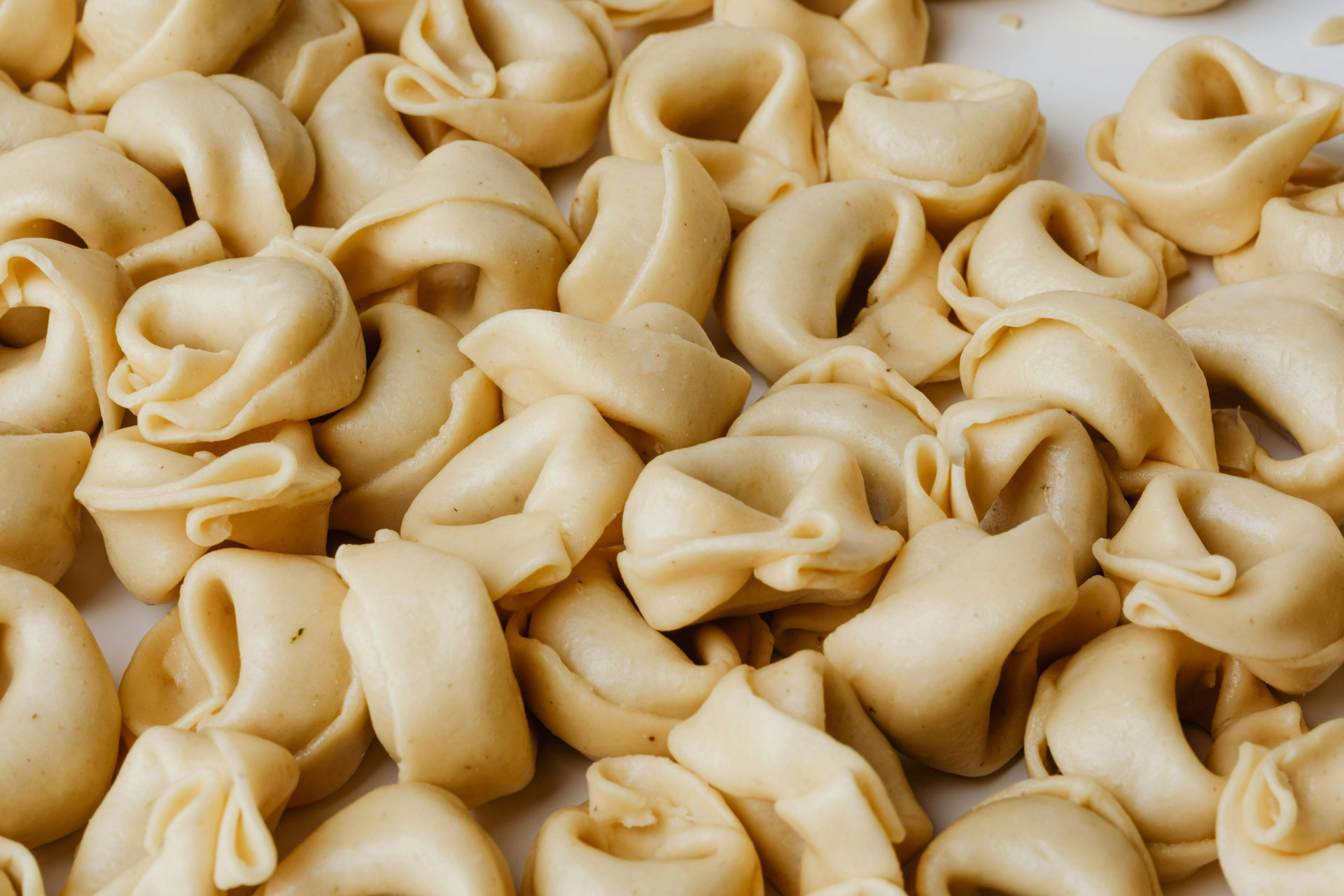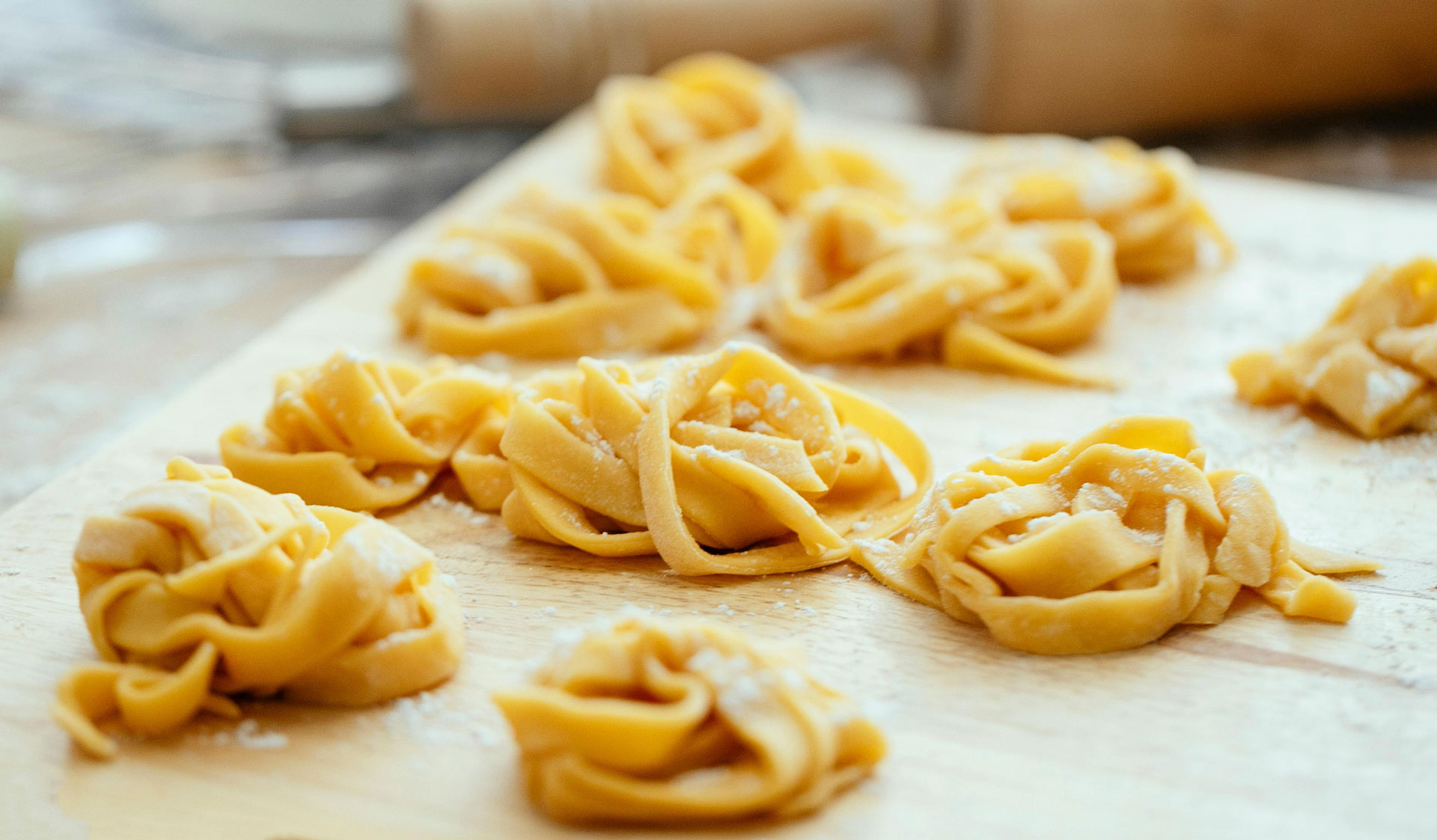Emilia-Romagna and its ceramic tradition
Emilian cuisine is much more than a set of tasty dishes: it is a narrative made up of handed-down gestures, genuine ingredients and conviviality. For those who approach the stove with enthusiasm but little experience, Emilia offers a fertile soil.
Thanks to authentic but accessible preparations, it is possible to learn how to cook bringing to the table flavors that tell a generous and creative land. In this article I will guide you step by step to discover some typical dishes of the Emilian tradition, suitable even for beginners.

Learn from the classics: tortellini in broth
The symbol of the city of Bologna, tortellini are a real ritual for many families in Emilia. To make them you need few ingredients, but great attention to detail. The basic dough is prepared with wheat flour and fresh eggs, while the filling provides a balanced mix of pork loin, mortadella, raw ham, grated Parmigiano Reggiano and nutmeg.
Once the thin sheet is pulled, cut into squares, add the filling and close each tortellino with a typical fold in the shape of a navel. They should be served in meat broth, better if prepared with capon or beef, for a result that warms the heart and stomach.
The comfort of tradition: lasagne bolognese
Lasagne is one of the most popular dishes in Emilia-Romagna. Perfect for Sunday lunches or anniversaries, they combine rich flavors and different textures. Even for those who do not have much experience, they are an excellent choice thanks to their layered structure that allows you to correct any small errors.
The heart of the dish is the ragout, made with mixed minced meat, fried vegetables (celery, carrot and onion), tomato paste, red wine and milk.
Cooking slowly for at least two hours guarantees a deep taste. The soft and enveloping béchamel is prepared with butter, flour and milk. Each layer should be completed with plenty of grated Parmigiano. In the oven, an irresistible golden crust is formed.
Food to share: tigelle and crescentine
When it comes to conviviality in Emilia, you can not miss tigelle and crescentine. The first, originating from the Modena Apennines, are round and thin scones that can be enjoyed stuffed with cold meats, soft cheeses and typical seasonings such as “cunza”, a beaten of lard, garlic and rosemary.
The preparation is simple: flour, water, yeast and little lard. After a short rest, the dough is spread out and cooked on special plates or in a pan. Crescentine, on the other hand, are light pancakes that swell in boiling oil. Serve hot, accompanied by typical products such as cup, raw ham or squacquerone. An informal dinner perfect even for those who are learning.

The rustic taste of erbazzone
Dish of the Reggiana peasant tradition, the erbazzone is a savory cake rich in taste. The filling, simple but nutritious, is composed of boiled beets, chopped onion, bacon (optional), Parmesan cheese and eggs. The whole is enclosed in a thin sheet of flour, water, oil and salt.
Once assembled, bake in the oven until you get a crunchy surface. This rustic can be served as an appetizer, single dish or snack. For beginners, it is a great opportunity to practice the basics of salty cooking, learning to manage cooking times and doses.
Traditional sweetness: the Bolognese rice cake
Among the most iconic desserts in the region, rice cake occupies a special place. Also known as “Torta degli Addobbi”, it is prepared during religious holidays and family events. Despite the apparent simplicity, it is a sweet that conquers thanks to its delicacy.
Start by cooking the rice in milk with a stick of vanilla and lemon zest. Once cooled, it is added to eggs, sugar, liqueur (usually amaretto or Sassolino liqueur), chopped almonds and a pinch of salt. Bake until you get a firm but creamy texture. The result is a sweet, fragrant and soft texture, perfect to end a meal with an Emilian touch.
Small tricks for excellent results
Even the simplest dishes can become exceptional if prepared with care.
Here are some tips to improve immediately:
• Use fresh and quality ingredients, preferably at zero km.
• Respect the rest times of the dough: they make everything more digestible.
• Do not rush with slow cooking, especially for sauces and broths.
• Taste often, to regulate salt, acidity and consistency.
• Organize the work plan: order and cleanliness help not to make mistakes.
The Emilian cuisine teaches to value every single step, even the simplest, transforming a daily gesture into a fulfilling experience.
From theory to the table
The Emilian Food Valley is not only a geographical destination, but a culinary universe to explore step by step. The recipes we have seen represent a perfect starting point for those who want to experiment in cooking, even without great experience. Preparing dishes such as tortellini, lasagna or erbazzone will allow you not only to acquire fundamental techniques, but also to approach a deep and welcoming gastronomic culture.
With a little practice and the right advice, every budding cook can bring Emilia to the table. And who knows: maybe this will be just the first stage of a journey made of flavors, traditions and so much satisfaction.
Start your journey in the Food Valley
Cooking traditional recipes is also a way to discover the territory. Each Emilian dish comes from a well-defined agricultural and cultural context. The tortellini tell the story of Bolognese families gathered at the table on festive days; the erbazzone speaks of sobriety and peasant ingenuity; the tigelle evokes evenings in company under the arcades of Modena.
Who approaches this cuisine, even as a beginner, comes into contact with a living history, made of flavors and relationships. You don’t need complex techniques to get started: all you need is passion, authentic ingredients and the desire to learn.


